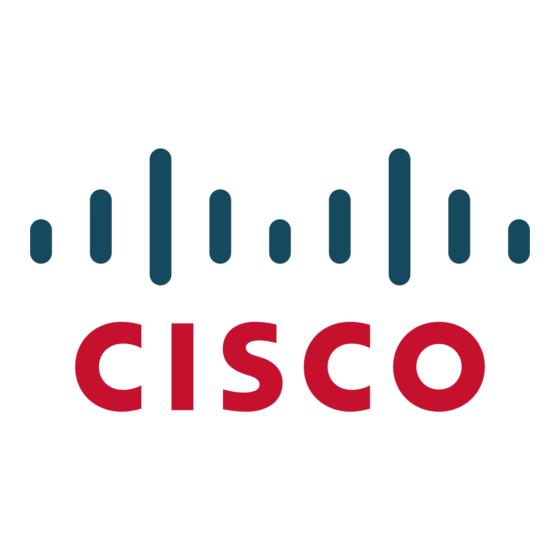Cisco 7936 - IP Conference Station VoIP Phone Sistem Kılavuzu - Sayfa 32
IP Telefon Cisco 7936 - IP Conference Station VoIP Phone için çevrimiçi göz atın veya pdf Sistem Kılavuzu indirin. Cisco 7936 - IP Conference Station VoIP Phone 50 sayfaları. Ip phone conference station
Ayrıca Cisco 7936 - IP Conference Station VoIP Phone için: Sistem Kılavuzu (36 sayfalar), Telefon Kılavuzu (49 sayfalar), Hızlı Başlangıç Kılavuzu (6 sayfalar), Hızlı Referans Kılavuzu (2 sayfalar)

Directory Numbers
Direct Transfer and Join Behavior
Onhook Call Transfer
Cisco CallManager System Guide
40-32
The following information describes Direct Transfer and Join behavior:
•
Direct Transfer joins two established calls (call is in hold or in connected
state) into one call and drops the feature initiator from the call. Direct
Transfer does not initiate a consultation call and does not put the active call
on hold.
Join does not create a consultation call and does not put the active call on
•
hold. To implement Join, choose at least two calls and then press the Join
softkey on one of the calls. Join can include more than two calls, which
results in a call with more than three parties. Join supports up to 16
participants in a call. To choose an active or held call highlight the call and
press the "Select" softkey. A selected call has a checked indicator shown next
to it on the phone. The call that initiates the Join gets automatically included,
even if not selected.
Modifications to the Call Transfer feature add the onhook (hangup) action as a
possible last step to complete a call transfer. The Transfer On-hook Enabled
service parameter, which enables onhook call transfer, must be set to True for
onhook call transfer to succeed. If the service parameter is set to False, the onhook
action ends the secondary call to the third party.
In the existing implementation, if user B has an active call on a particular line
(from user A) and user B has not reached the maximum number of calls on this
line, the Cisco IP Phone provides a Transfer softkey to user B. If user B presses
the Transfer softkey (or Transfer button, if available) once, user B receives dial
tone and can make a secondary call: user B dials the number of a third party (user
C). Cisco CallManager provides a Transfer softkey to user B again. If user B
presses the Transfer softkey again (or Transfer button, if available), the transfer
operation completes.
With the new onhook call transfer implementation, user B can hang up after
dialing user C's number, and the transfer completes. Both the existing and new
implementations work in both the case of a blind transfer (user B disconnects
before user C answers) and also in the case of a consult transfer (user B waits for
user C to answer and announces the call from user A).
Chapter 40
Cisco IP Phones
OL-7135-01
